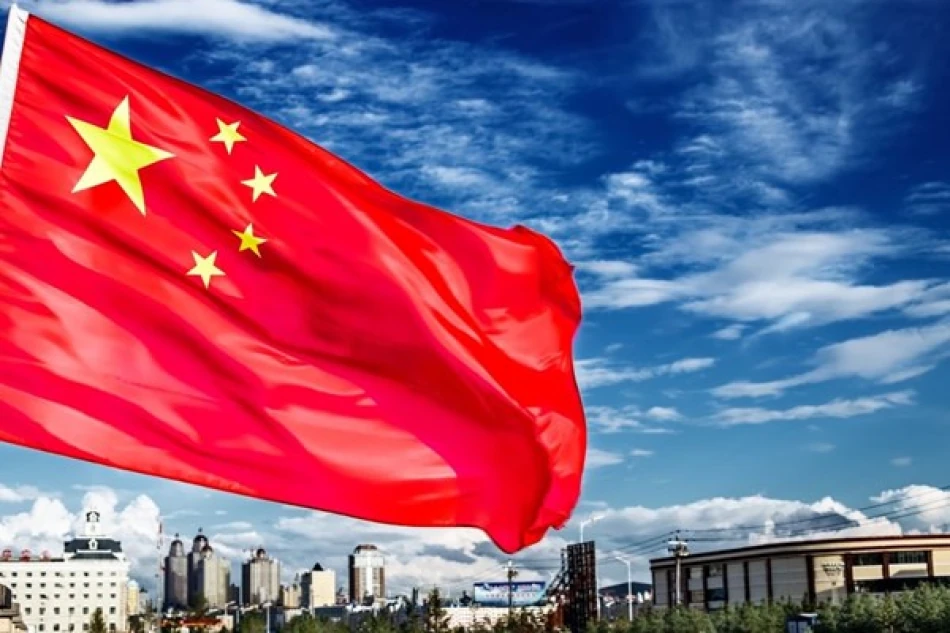
Chinese State-Owned Firms Struggle with Profit Decline in First Half of Year
China's State Giants Signal Economic Headwinds as Profits Tumble in Early 2025
China's massive state-owned enterprise sector is showing clear signs of strain, with profits falling 3.1% year-on-year in the first half of 2025 while revenues declined 0.2%. The downturn in these government-controlled corporate behemoths—which dominate key sectors from energy to telecommunications—offers a telling snapshot of broader economic pressures facing the world's second-largest economy.
The Numbers Behind the Decline
Official data released by China's Ministry of Finance reveals the scope of the challenge facing state enterprises. Total taxes and fees paid by these companies reached approximately 3 trillion yuan ($419.52 billion) during the six-month period, down 0.8% from the previous year. Meanwhile, the debt-to-asset ratio for these firms stood at 65.2% by the end of June, highlighting ongoing leverage concerns.
While a 3.1% profit decline might seem modest, it represents a significant shift for enterprises that have historically served as economic stabilizers during downturns. These companies, which include industrial giants like China National Petroleum Corporation and State Grid Corporation, typically maintain steady performance even when private sector firms struggle.
Broader Economic Implications
State Enterprise Role in China's Economy
State-owned enterprises remain the backbone of China's economic model, controlling critical infrastructure, energy production, and strategic industries. Their performance often mirrors—and sometimes predicts—broader economic trends. The current decline suggests that even government-backed firms are not immune to the headwinds affecting China's economy in 2025.
Market and Investor Perspective
For global investors, this data reinforces concerns about China's economic trajectory. State enterprises have traditionally provided stability during uncertain times, making their current struggles particularly noteworthy. The 65.2% debt-to-asset ratio, while not immediately alarming, indicates these firms are carrying substantial leverage at a time when revenues are under pressure.
International markets may interpret this as a signal that China's economic challenges run deeper than previously acknowledged, potentially affecting everything from commodity demand to global supply chains.
Historical Context and Comparisons
This performance contrasts sharply with state enterprise behavior during previous economic slowdowns. During the 2008 financial crisis and early COVID-19 pandemic, these companies often maintained or even increased spending to support government stimulus efforts. The current profit decline suggests either that economic pressures are more severe or that Beijing is allowing market forces to play a larger role in enterprise performance.
Unlike Western economies where government intervention typically involves temporary support measures, China's state enterprises serve as permanent policy tools. Their current struggles may force policymakers to choose between allowing market-driven adjustments or increasing state support to maintain stability.
Looking Ahead: Policy Response and Market Impact
The decline in state enterprise performance will likely prompt discussions about additional stimulus measures or structural reforms. Beijing has historically used these companies as instruments of economic policy, making their current weakness a potential catalyst for broader government action.
For global businesses operating in or with China, this data suggests continued economic uncertainty. Reduced profitability among state enterprises could translate to decreased demand for international goods and services, while also potentially creating opportunities as these firms seek efficiency improvements and partnerships.
The performance of China's state sector in the coming months will serve as a crucial indicator of whether current economic pressures represent a temporary adjustment or signal deeper structural challenges requiring more substantial policy intervention.
Most Viewed News

 Layla Al Mansoori
Layla Al Mansoori






